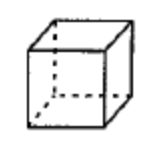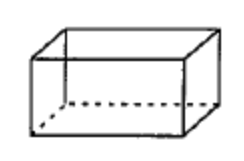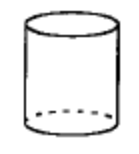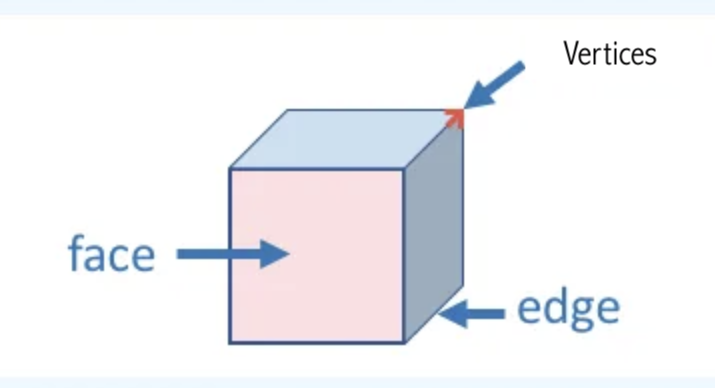
Which three dimensional figure has 5 faces, 8 edges and 5 vertices?
A.

B.

C.

D.





Answer
488.4k+ views
Hint Here, we will use that in a three dimensional figure, faces are the surfaces that are made up of the outside of a shape, edges are the lines in between the faces and vertices are where two or more edges meet. And then consider each option to find the correct one which is the same as given in the question.
Complete step-by-step answer:
We know that the three dimensional figure has 5 faces, 8 edges and 5 vertices.
We know that in a three dimensional figure, faces are the surfaces that are made up of the outside of a shape, edges are the lines in between the faces and vertices are where two or more edges meet.

Considering option A, we get that a rectangular pyramid has 5 faces, 8 edges and 5 vertices.
Thus, option A is correct.
Considering option B, we get that cube has 6 faces, 12 edges and 8 vertices.
Thus, option B is incorrect.
Considering option C, we get that cuboid has 6 faces, 12 edges and 8 vertices.
Thus, option C is also incorrect.
Considering option D, we get that the cylinder has 3 faces, 2 edges and no vertices.
Thus, option D is also incorrect.
Hence, option A is correct.
Note Whenever you face such type of problems draw the diagram and count the number of edges, faces and vertices with the help of diagram. Since we are given the diagrams in option, so we didn’t have to draw them separately, find the required values using the same diagrams from the problem. The key concept is to know the meaning of edges, faces and vertices.
Complete step-by-step answer:
We know that the three dimensional figure has 5 faces, 8 edges and 5 vertices.
We know that in a three dimensional figure, faces are the surfaces that are made up of the outside of a shape, edges are the lines in between the faces and vertices are where two or more edges meet.

Considering option A, we get that a rectangular pyramid has 5 faces, 8 edges and 5 vertices.
Thus, option A is correct.
Considering option B, we get that cube has 6 faces, 12 edges and 8 vertices.
Thus, option B is incorrect.
Considering option C, we get that cuboid has 6 faces, 12 edges and 8 vertices.
Thus, option C is also incorrect.
Considering option D, we get that the cylinder has 3 faces, 2 edges and no vertices.
Thus, option D is also incorrect.
Hence, option A is correct.
Note Whenever you face such type of problems draw the diagram and count the number of edges, faces and vertices with the help of diagram. Since we are given the diagrams in option, so we didn’t have to draw them separately, find the required values using the same diagrams from the problem. The key concept is to know the meaning of edges, faces and vertices.
Recently Updated Pages
Master Class 11 Accountancy: Engaging Questions & Answers for Success

Express the following as a fraction and simplify a class 7 maths CBSE

The length and width of a rectangle are in ratio of class 7 maths CBSE

The ratio of the income to the expenditure of a family class 7 maths CBSE

How do you write 025 million in scientific notatio class 7 maths CBSE

How do you convert 295 meters per second to kilometers class 7 maths CBSE

Trending doubts
The Equation xxx + 2 is Satisfied when x is Equal to Class 10 Maths

Why is there a time difference of about 5 hours between class 10 social science CBSE

Change the following sentences into negative and interrogative class 10 english CBSE

What constitutes the central nervous system How are class 10 biology CBSE

Write a letter to the principal requesting him to grant class 10 english CBSE

Explain the Treaty of Vienna of 1815 class 10 social science CBSE




